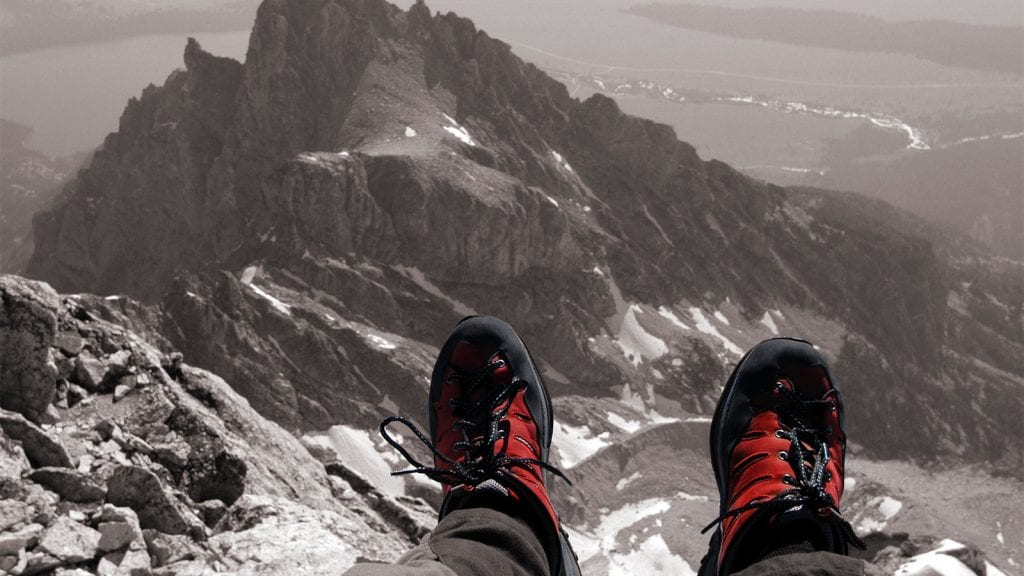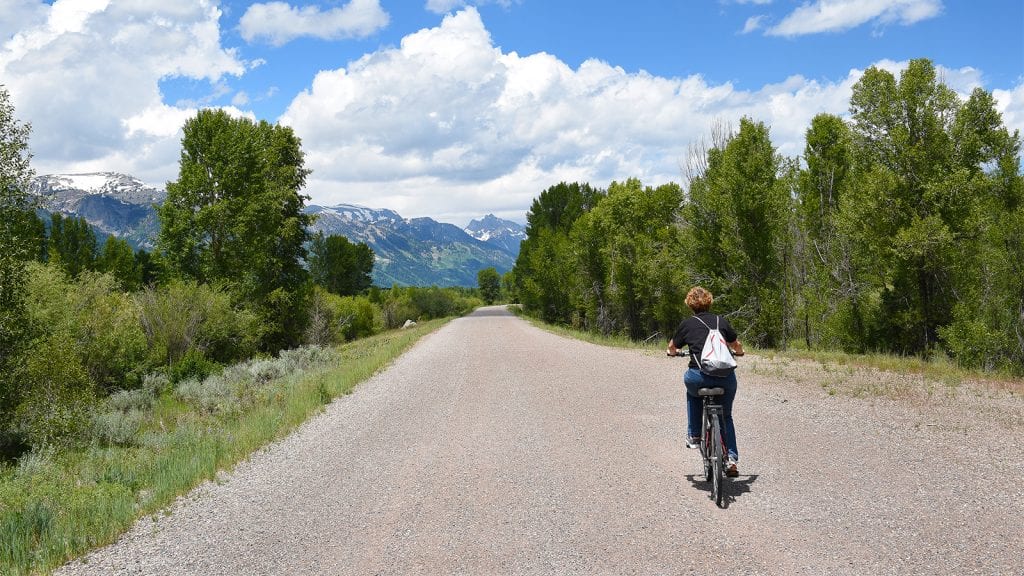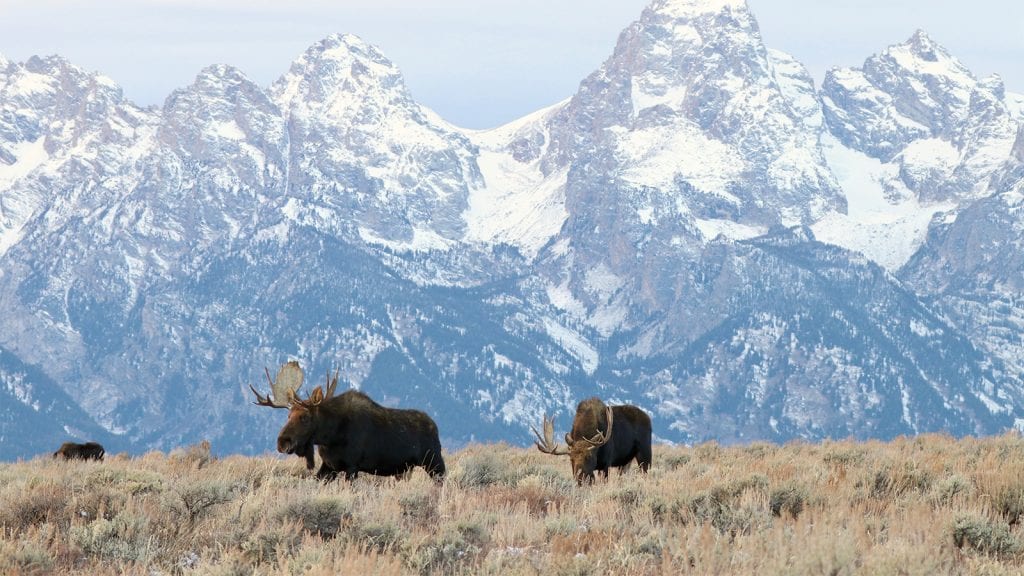The best time to visit Grand Teton National Park is from mid May to late September.
This is the peak season when all the visitor centers, hiking trails and various activities such as kayaking and fishing are open to tourists. September brings the start of the pronghorn migration and the elk rut. Both are fantastic experiences to witness for wildlife lovers.
Page Contents
Mid May to late September
The Grand Teton National Park’s peak season officially begins in mid-May. The average high temperature at this time of year is in the low 60s, but in July and August, it will reach the 80s before dropping to the 70s by late September.
The number of tourists and the accommodation costs are at their highest for the year. In July and August, afternoon thunderstorms are frequent, so consider bringing rain gear.
What’s on :
- American Indian Guest Artist (May to September)
- Campfire Program at Colter Bay (June to September)
October to early May
The winters are harsh, with temperatures frequently falling into the single digits. One of the main causes for the closure of many of the park’s amenities, roads, and lodgings for the season is the severe and quick-accumulating snowfall.
However, it’s the greatest time for snowshoers and cross-country skiers who want to travel through the far-off winter wonderland.
What’s on :
- Ranger-led Snowshoe Walk (December to March)
Best time for camping (July to September)

The best time for camping in Grand Teton is from July to September.
Throughout the late summer and early fall, most campgrounds and backcountry campsites are free of snow and easy to access. Of course, summer is the busiest time of year for camping in the park, so you’ll want to make a reservation or arrive as early in the morning as possible to snag your spot.
Looking to beat the mosquitos? Consider camping in the park during the end of August or early September when the mosquito nuisance level is comparatively low.
Read More : Best Campgrounds in Grand Teton National Park
Best time for hiking (July to September)

The best time for hiking in Grand Teton is from July to September.
During these months, the trails in the park are mostly snow-free, except at higher elevations. This means you can enjoy a comfortable summer hiking experience without worrying about post-holing throughout your entire route.
Keep in mind that afternoon thunderstorms are common during this time of year. So, plan your hiking days wisely to avoid being on the top of a ridge in the late afternoon.
Read More : The Best Hikes in Grand Teton National Park
Best time to avoid crowds (April to May)

The best time to avoid crowds in Grand Teton National Park is in the spring, particularly in April and May.
Throughout the spring, the weather is quite variable and most of the trails are still covered with a sizable amount of snow. Lower elevation trails can be quite muddy during this time, as can those at higher elevations as the snow starts to melt.
However, if you’re prepared for the trails and have the right gear, like a sleeping bag liner, for the chilly nights, spring is a great time for solitude in the Tetons.
Best time for mountaineering (June to August)

The best time for mountaineering in the Tetons is from June to August, when the weather is generally at its best.
Although you’ll certainly have to face snow at the higher elevations during the early part of the summer, the warmer weather and generally dry mornings make for excellent climbing conditions.
However, afternoon thunderstorms are very common. Therefore, be sure to plan your route so you’re off of any exposed ridges by the early afternoon, and don’t forget to pack a rain jacket.
Best time for boating (June to August)

The best time for boating in Grand Teton is from June to August.
During the summer months, the flatwater boating on Jenny Lake, Jackson Lake, and other big lakes in the park is at its finest. This is because the weather is usually quite sunny and warm during this time, which makes boating a great way to spend your day.
Do keep in mind that you’ll need a permit for the use of any boat (except inflatable boats under 10ft/3m) in the park, which can be purchased at the Moose and Colter Bay visitors centers.
Best time for biking (August to September)

The best time for biking in Grand Teton is late August to September.
By the late summer and early fall, the daytime temperatures are comfortable enough for a long bike ride through the park. Plus, by this time, all of the park’s roads should be completely snow-free, giving you a seemingly endless series of choices for exploring Grand Teton on bike.
Again, be aware that the park’s roads can be busy, so be sure to use the multi-use pathways for biking to avoid the traffic during the summer and fall months.
Best time for fishing (March to April, July to September)

The best time for fishing in Grand Teton is either March to April or July to September.
Before the snowmelt, from March to April, the rivers are usually crowd-free and flowing just at the right speed for quality fishing conditions. Meanwhile, late summer and early fall bring nice weather for casting lines and reeling in fish within the park.
Best time for scenic drives (July to September)

The best time for scenic drives in Grand Teton is from July to early September.
Between July and early September, most, if not all, of the park’s roads should be completely snow-free, allowing for easier driving in the region. That being said, the roads can get fairly crowded, particularly in July and August.
Therefore, early September is ideal if you want a mix of good weather and smaller crowds.
Best time to see wildlife (September)

The best time to see wildlife in Grand Teton is during September.
September is a wildlife lover’s paradise in the park because it brings the annual elk rut and the start of the pronghorn migration. Both of these events provide visitors with an excellent possibility to see some of the region’s largest mammals in large groups.
Moreover, early September is a great time to visit if you’re looking to do a bit of birding. During this time, you have a chance to see some of the last summer residents before they leave for the winter, plus an opportunity to see any migratory birds that stop over in the park in the fall on their southbound journey.
Gaby Pilson
Gaby is a professional mountain guide with a master’s degree in outdoor education. She works primarily in the polar regions as an expedition guide, though she can be found hiking, climbing, skiing, sailing, or paddling in some of the world’s most amazing places when not at work.


